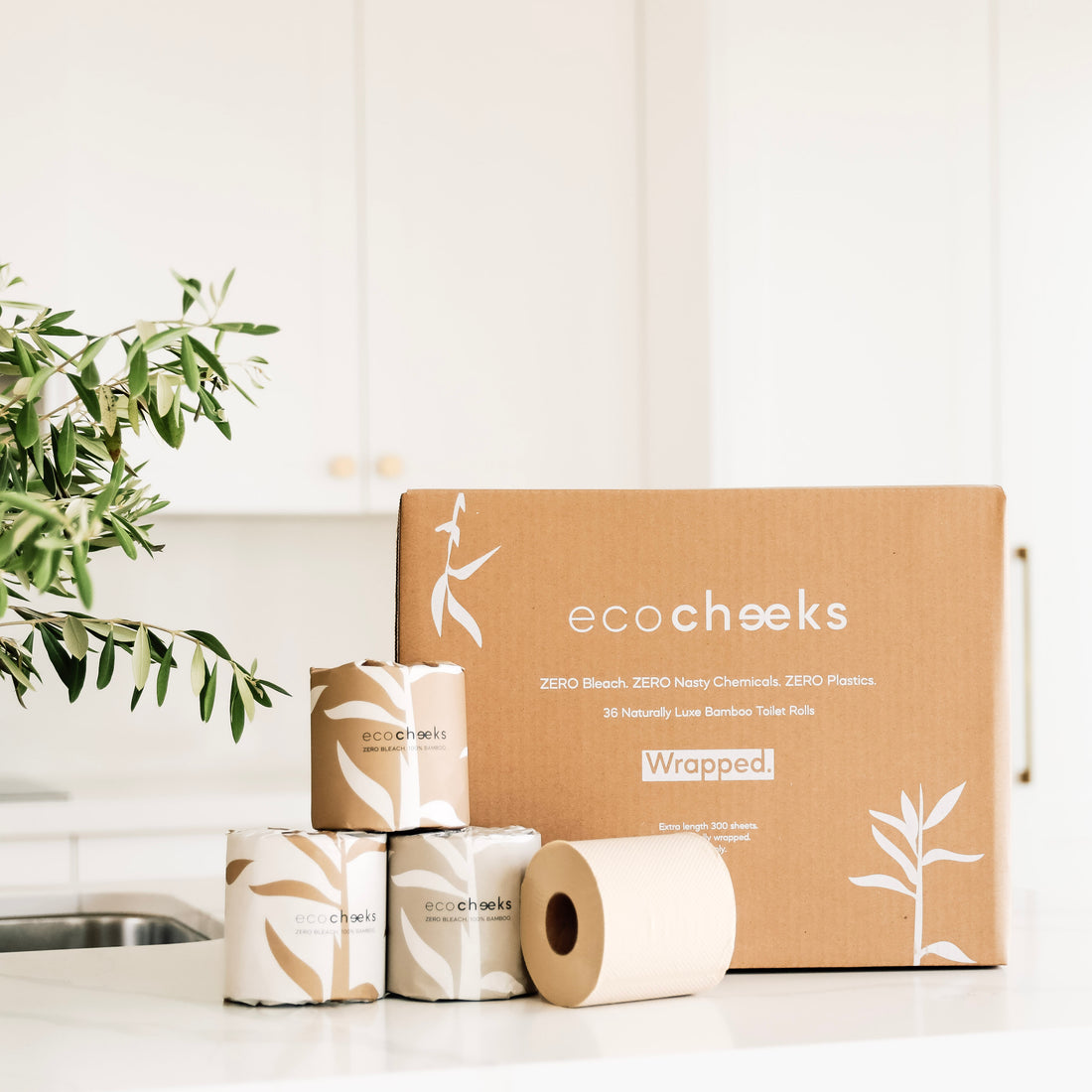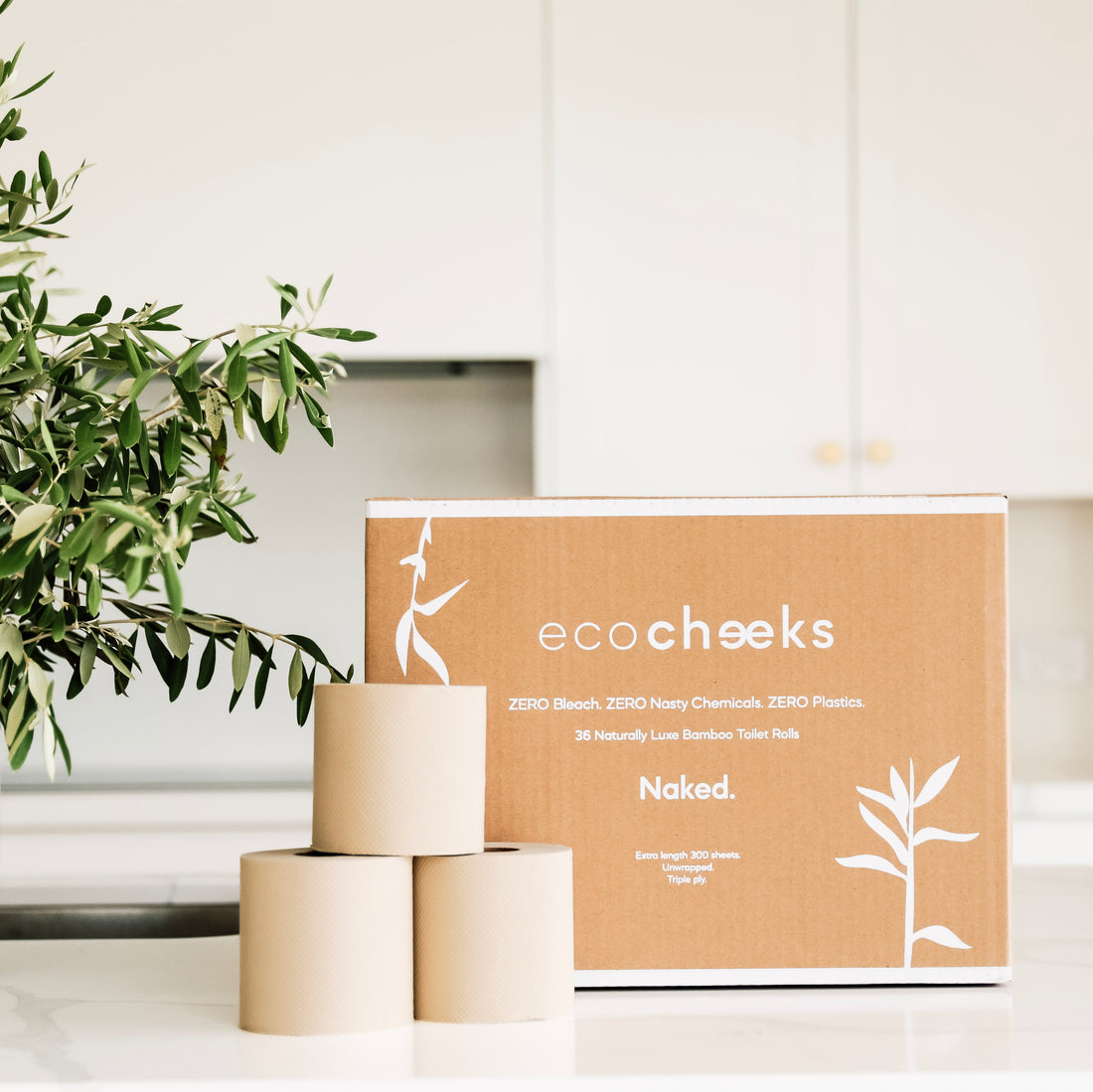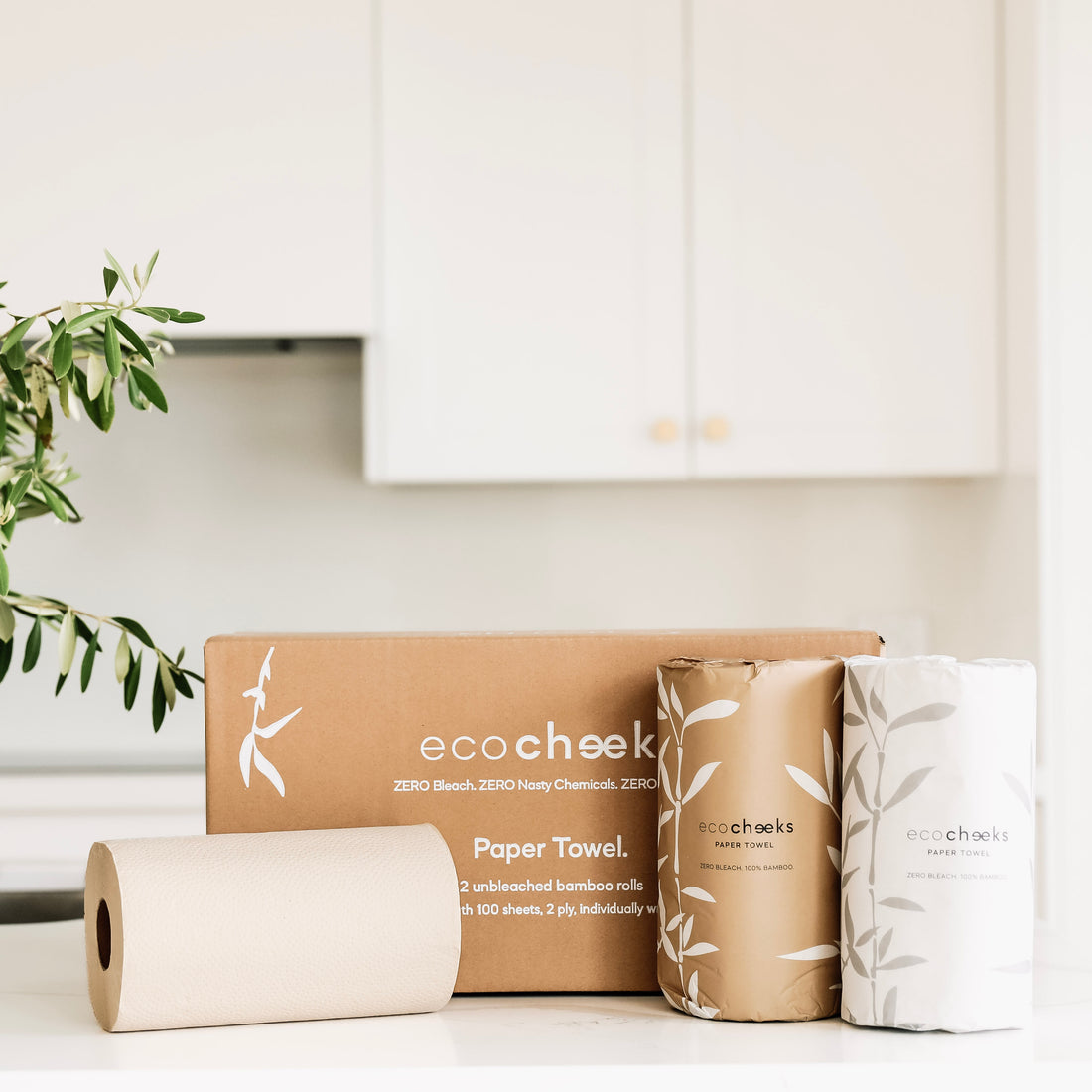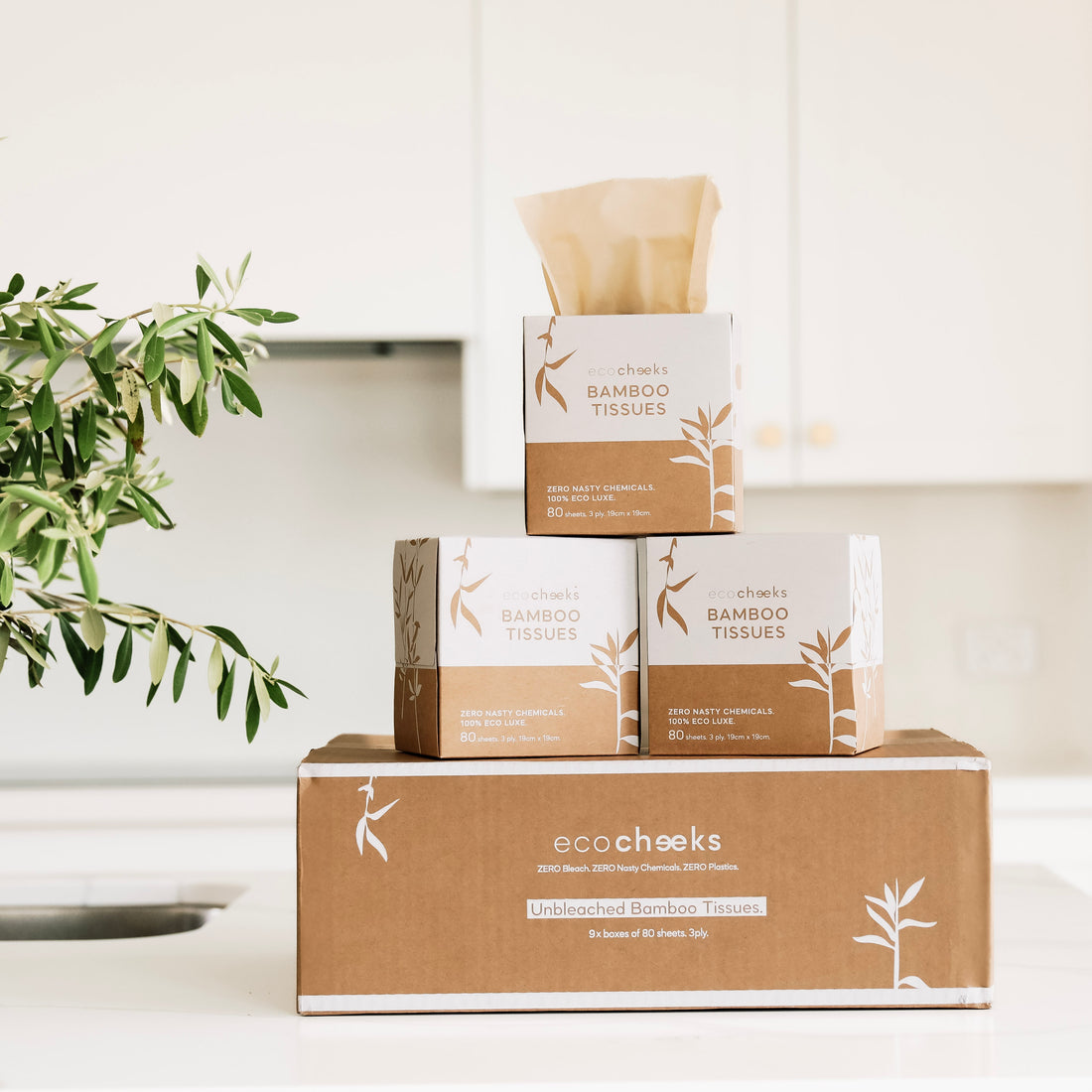When it comes to choosing the right eco-friendly toilet paper, you’ve got to consider more than just what’s on a roll! Deciding between bamboo vs recycled paper is a surprisingly involved choice when you’re aiming for a greener bathroom routine. Each option has its ups, so let’s dive into the nitty-gritty on environmental impact, manufacturing, softness, durability, and cost to figure out which is the true eco-winner: bamboo or recycled paper?
1. Environmental Impact: Bamboo Toilet Paper vs. Recycled
Forests play a critical role in maintaining our planet’s health, acting as the "lungs" that absorb carbon dioxide and release oxygen. Both bamboo and recycled paper provide sustainable alternatives to virgin tree pulp, helping to reduce deforestation and its devastating impact on biodiversity and ecosystems.
Bamboo’s Benefits: Often called “super grass,” bamboo grows at an astonishing rate of up to a metre a day and can be harvested in just 3–5 years. Its rapid renewability lessens the pressure on old-growth forests, crucial for carbon storage and diverse wildlife habitats.
Recycled Paper’s Contribution: By repurposing waste paper, recycled paper minimises the need for logging, directly aiding forest conservation. This process ensures that fewer trees are cut down, preserving natural habitats and reducing landfill waste.
Environmental Considerations:While bamboo requires less chemical processing and is highly renewable, recycled paper uses existing resources, reducing the demand for raw materials. Both have environmental trade-offs—bamboo avoids deforestation entirely, while recycled paper helps keep waste out of landfills.
Winner: It's a tie!Both bamboo and recycled paper excel in protecting forests. The choice depends on balancing factors like energy use, water consumption, and your commitment to reducing waste. By choosing products like Eco Cheeks, which prioritise unbleached bamboo and toxin-free processes, you're contributing to forest conservation and a more sustainable planet.
2. Manufacturing Process: The Carbon Footprint Showdown

The environmental impact of bamboo and recycled toilet paper is shaped significantly by the resources required for their production, including water, energy, and transportation.
-
Bamboo: Bamboo’s minimal processing requirements make it a more energy-efficient choice compared to other materials. Its natural ability to regenerate quickly reduces the need for replanting, and it absorbs large amounts of carbon dioxide, aiding carbon sequestration before harvesting. When processed into paper, bamboo requires less energy and fewer chemicals, making the manufacturing process lighter on the environment. While most bamboo is grown in Asia, Eco Cheeks offsets transport emissions to ensure its carbon footprint remains as low as possible.
-
Recycled Paper: Recycled paper production helps reduce the need for virgin pulp, but it is an energy- and chemically-intensive process. The de-inking and repulping stages require significant amounts of water, energy, and chemicals to remove contaminants. This makes the process not only energy-heavy but also reliant on harsh chemicals, which further increase the environmental impact. When waste materials are transported long distances to processing facilities, it adds additional emissions. In some cases, the energy and chemical consumption in recycled paper production can rival or even exceed that of virgin paper, especially when fossil fuels power the process.
-
The long-distance transport of bamboo balances out due to its lower requirement for energy and resources to turn the raw material into paper.
-
Recycled paper production’s energy, chemicals and water demands, especially in non-optimised facilities, can make its carbon footprint less favourable than anticipated.
Bamboo’s natural ability to regenerate rapidly, sequester carbon, and require minimal processing gives it the edge in terms of overall manufacturing footprint. Eco Cheeks takes extra care to ensure a sustainable production process, from responsibly sourcing bamboo to offsetting transport emissions. This commitment makes bamboo a standout choice for eco-conscious consumers looking to reduce their environmental impact

3. Water and Energy
In a world facing increasing water scarcity, the choice of materials matters not just for their utility but for their impact on essential resources like water and oxygen.
-
Water Usage for Growth: Bamboo is a naturally water-efficient crop that thrives in diverse climates without requiring additional irrigation. Its deep root system helps retain soil moisture, reducing the need for external water inputs. Unlike many hardwood trees used for paper, bamboo’s rapid growth means it absorbs and utilises water more effectively over a shorter period.
Recycled paper, while beneficial for reducing waste, demands significant water for processing. Water is essential to clean the fibres, remove inks, and prepare the material for reuse, which contrasts sharply with bamboo’s minimal water needs during growth.
-
Oxygen Production: Bamboo has a remarkable ability to release oxygen into the atmosphere. A bamboo grove produces approximately 35% more oxygen than an equivalent stand of trees and absorbs higher levels of carbon dioxide. This makes bamboo not only a sustainable material but also a critical contributor to cleaner air and combating climate change.
Recycled paper, while reducing deforestation, cannot contribute to oxygen production as it does not involve living plants actively photosynthesising. Therefore, its impact on oxygen generation is neutral compared to bamboo's positive contribution.
Winner: BambooWith its low water requirements for growth and impressive oxygen production capabilities, bamboo emerges as a clear leader in this category. Eco Cheeks further enhances bamboo's natural advantages by using unbleached bamboo, maintaining its eco-friendly credentials while reducing the strain on vital resources.
4. Softness and Durability
When it comes to comfort, bamboo really shines. Bamboo’s long fibres make for a naturally soft, strong toilet paper that’s gentle on sensitive skin, giving you a plush experience. Additionally, bamboo’s strength means that fewer sheets are needed per use, so it’s both soft and durable.
Recycled paper, with shorter, mixed fibres, doesn’t have the same softness or durability. It can be a bit rough to the touch and may require more sheets to get the job done, especially for those with sensitive skin. Eco-conscious buyers often feel this trade-off is worth it, but there’s no denying that bamboo provides a noticeably softer feel.
Winner: Bamboo
It’s naturally soft, hypoallergenic, and longer-lasting, making it the clear choice for comfort and durability. Eco Cheeks uses premium-grade bamboo fibres, resulting in a plush softness that’s hard to beat. The unbleached, long bamboo fibres ensure a smooth feel that’s perfect for sensitive skin.
5. Cost Comparison: The Value of Bamboo
The price of bamboo toilet paper is often higher than recycled options, mainly due to the costs of international transport and the smaller scale of bamboo production. However, bamboo rolls generally last longer because of their durability and the increased number of sheets per roll, which can even out the initial investment over time.
Recycled toilet paper is usually cheaper due to its local sourcing and processing, but its rougher texture and shorter fibres often mean you’ll go through it more quickly. So, while the upfront price tag is lower, you may find yourself buying more recycled rolls over time.
Winner: It’s a Tie.
Both options offer environmental benefits that make them worthy of consideration. However, when you factor in the sustainability of bamboo's production process and the reduction of chemicals in both the environment and on our bodies, bamboo takes the edge as the clear winner. Eco Cheeks bamboo rolls also pack more sheets than the average, giving you great value without the need for frequent replacements.
6. Healthiest Choice
When choosing eco-friendly options for toilet paper, one of the key considerations is the presence of harmful chemicals. Here's how bamboo and recycled paper compare:
Bamboo Toilet Paper:Bamboo is naturally free from herbicides and pesticides. It’s a self-regenerating crop, meaning it doesn’t require replanting and grows without the need for harmful chemicals. This makes it an ideal choice for those seeking a more natural, toxin-free product. Additionally, Eco Cheeks bamboo toilet paper is made from sustainably harvested bamboo that is free from bleach and harsh chemicals typically used in traditional paper production. The unbleached bamboo retains its natural color, further reducing its chemical footprint.
Recycled Toilet Paper:While recycled paper does reduce deforestation and landfill waste, its production process often involves the use of chemicals, particularly in the de-inking and bleaching stages. These chemicals can leave behind residues in the final product, which may not be as desirable for those looking to avoid toxins.
Winner: Bamboo
Bamboo’s natural, chemical-free growth process and the absence of bleach in Eco Cheeks' production make it a superior choice for consumers seeking a non-toxic, sustainable option. This is an important factor in the fight against chemical contamination in everyday products.
The Verdict: Why Bamboo’s the Better Roll for the Planet

So, which deserves a spot in your eco-friendly bathroom? Bamboo edges ahead as the best all-around choice for those who want a soft, sustainable, and durable option. Recycled paper has its merits, especially as a cost-effective choice that keeps waste out of landfills, but bamboo truly shines as the greener option. When you reach for bamboo, you’re choosing a product that’s good for your home and for the planet. So go ahead and make the switch — each roll is a small choice that adds up to a big change for our world. 🌱








